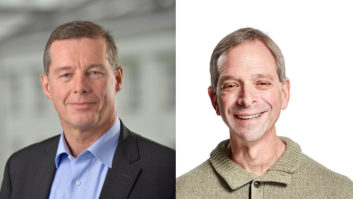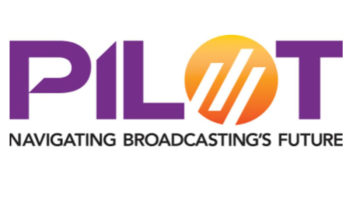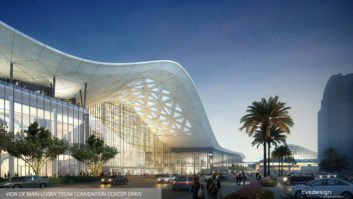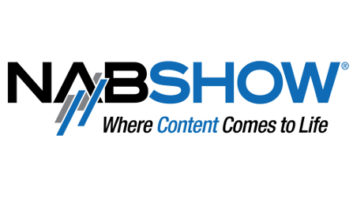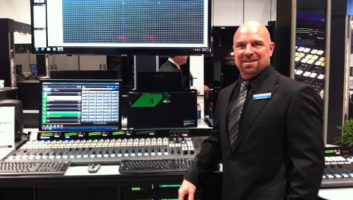 March 11: NAB says it will not hold the NAB Show in April. However, Radio World conducted several short Q&As with manufacturers about their plans and offerings ahead of the show. Learn about what these radio newsmakers feel is important to the industry right now.
March 11: NAB says it will not hold the NAB Show in April. However, Radio World conducted several short Q&As with manufacturers about their plans and offerings ahead of the show. Learn about what these radio newsmakers feel is important to the industry right now.
Darrin Paley is the senior sales engineer for western U.S.A. and Canada for Wheatstone.
Radio World: How has business been for the company since last year’s NAB Show?
Darrin Paley: Last year we did our biggest project ever in terms of complexity, size, scope and innovation — WTOP. We also found ourselves putting together packages for smaller and mid-sized stations, and I think that’s because the broadcast industry is changing at such a fast pace. Everyone needs technical solutions to those changes and they’re looking to the Wheatstones of the industry to provide it. It definitely keeps us thinking of new ways to stay ahead of the curve.
[Read: 2020 NAB Show: Schedule, Exhibitor Info, Updates]
RW: What are you hearing from your customers about their business outlook this year? In what areas should we expect growth or the most interesting projects?
Paley: The trend seems to boil down to “how to do more with less.” There’s a lot of interest in how to share studios, content and resources across distances. Broadcasters tell us they’re looking for ways to reduce real estate costs and hardware upkeep. At the same time, they’re adding more services, like streaming, and, of course, all of that falls under the AoIP umbrella. The look of the studio itself has changed as well, due in large part to virtual mixers like our Glass LXE. A number of projects I worked on this year didn’t actually have a physical console in one or more studios, and that, along with AoIP appliances to bridge studios separated by distance are creating real opportunities for broadcasters to impact their bottom line.
RW: The last year has proven rather rocky for much of the radio industry with the largest group owner making a big move to chart a new business/operational model. Stepping away from your particular segment, what is your feeling for the overall health of the radio industry?
Paley: Overall, we feel the radio industry is stable for the most part. What we saw in the last year was an industry stepping back to reevaluate how it was going to remain relevant for the foreseeable future given the change in consumer habits over the past few years.
RW: You’ve been active in the radio broadcast equipment market for many years. What’s the biggest problem or challenge facing users in this segment right now?
Paley: I think the biggest challenge for all of us in this industry is to recognize that we have to be open to new ideas. We can’t continue to do what we did five years ago. We have to keep moving forward because listeners are continually moving forward. At Wheatstone, we are constantly pushing the limits of what AoIP can do because we have an R&D department that’s made up of both engineers who have been with us since the beginning and understand the business, and also systems engineers who know about enterprise and telecommunications technology. That serves us well in being able to provide a path forward for broadcasters.
RW: What new goodies will your company be showing? Why should attendees visit N3317?
Paley: Last year we introduced several appliances for our AoIP system that bridged studios separated by distance and we developed some interesting interfaces to the network that made workflows much easier. This year, we’re taking it to the cloud in some unique ways that we think will change how broadcasters operate and will solve a few of the challenges we discussed earlier. We’ll be demonstrating WheatNet-IP and our virtual solutions at booth N3317.
RW: What do you anticipate will be the most significant technology trend at the 2020 NAB Show?
Paley: Virtualization and cloud. This seems to be a part of almost every conversation I have with broadcasters today, and for good reason. We are at an unprecedented time in broadcast history where we are just beginning to tap into technologies like cloud and virtualization that can make a real difference in the future of radio and television.
RW: Will you be attending any sessions or looking forward to any events?
Paley: I am looking forward to the BEIT session “Studio Elasticity, From Hardware to Virtual to Cloud,” presented by our senior software engineer, Scott Gerenser. It’s Tuesday afternoon, and he covers a lot of ground, including important trends and how broadcasters can start planning now for virtualization. I believe it starts at 3:45 p.m. in room N258, Tuesday of the show.
RW: You’re a show veteran, how has the show changed since your first visit?
Paley: My first NAB Show was in 1995 and I have been to the NAB in Las Vegas every year since, as an attendee and an exhibitor. The NAB Show has changed dramatically since 1995 in many ways, the biggest being the actual attendees. With the internet, consolidation, and the workload put on the engineers, not to mention the tighter budgets, there doesn’t seem to be as many attending. I remember how many local engineers, from small to large markets and from all over the world attended, and now it’s generally the group DOEs and the occasional local engineer who is researching equipment for an upcoming project.
